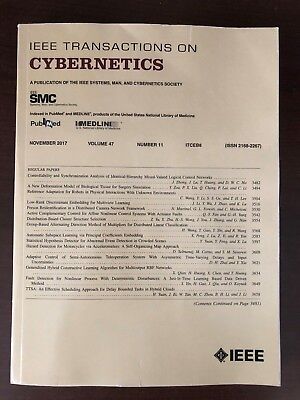Distributed Control for Time-Varying Formation Acquisition and Tracking With Orientation Alignment in Multivehicle Systems.
IF 10.5
1区 计算机科学
Q1 AUTOMATION & CONTROL SYSTEMS
引用次数: 0
Abstract
In multiagent coordination tasks, motion trajectories are required to satisfy a range of constraints that present significant implementation challenges due to the limited onboard sensing and communication capacities. This article introduces distributed control laws that integrate nonholonomic motion constraints into bearing-based designs to enable time-varying formation tracking with minimal onboard resources. Unlike state-of-the-art formation control solutions, this approach maintains formation shape through relative bearing feedback and orientation alignment rather than tracking global target locations or regulating interagent relative positions and velocities. This distributed controller design has been validated in two deployment scenarios: 1) leaderless nonhierarchical formations and 2) leader-follower hierarchical formations. In hierarchical formations, follower agents employ a speed estimator within the orientation alignment framework to reach velocity consensus with the leader agent. The proposed controllers guarantee accurate tracking of time-varying reference trajectories, preserve the desired formation structures, and achieve velocity consensus for both nonhierarchical and hierarchical formations, as established by analysis and validated through simulations and experiments.多车系统时变编队获取与定向跟踪的分布式控制。
在多智能体协调任务中,由于机载传感和通信能力有限,运动轨迹需要满足一系列限制条件,这给实现带来了重大挑战。本文介绍了将非完整运动约束集成到基于方位的设计中的分布式控制律,以最小的机载资源实现时变编队跟踪。与最先进的地层控制解决方案不同,该方法通过相对方位反馈和定向校准来保持地层形状,而不是跟踪全局目标位置或调节相互间的相对位置和速度。这种分布式控制器设计已经在两种部署场景中得到了验证:1)无领导的非分层编队和2)领导-追随者分层编队。在分层编队中,跟随智能体在方向对齐框架内使用速度估计器与领导智能体达成速度一致性。所提出的控制器保证了对时变参考轨迹的准确跟踪,保留了期望的地层结构,并实现了非分层和分层地层的速度一致性,通过分析和仿真和实验验证了这一点。
本文章由计算机程序翻译,如有差异,请以英文原文为准。
求助全文
约1分钟内获得全文
求助全文
来源期刊

IEEE Transactions on Cybernetics
COMPUTER SCIENCE, ARTIFICIAL INTELLIGENCE-COMPUTER SCIENCE, CYBERNETICS
CiteScore
25.40
自引率
11.00%
发文量
1869
期刊介绍:
The scope of the IEEE Transactions on Cybernetics includes computational approaches to the field of cybernetics. Specifically, the transactions welcomes papers on communication and control across machines or machine, human, and organizations. The scope includes such areas as computational intelligence, computer vision, neural networks, genetic algorithms, machine learning, fuzzy systems, cognitive systems, decision making, and robotics, to the extent that they contribute to the theme of cybernetics or demonstrate an application of cybernetics principles.
 求助内容:
求助内容: 应助结果提醒方式:
应助结果提醒方式:


